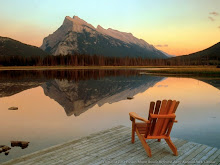
Copacabana is a borough located in the southern zone of the city Rio de Janeiro, famous for its 4 km beach.
The district was originally called Sacopenapã until the mid-18th century. It was renamed after the construction of a chapel holding a replica of the Virgin of Copacabana, the patron saint of Bolivia. It was incorporated into the city on July 6, 1892.
Copacabana begins at Princesa Isabel Avenue and ends at Posto Seis (lifeguard watchtower Six) near the Forte de Copacabana (Fort Copacabana). Beyond Copacabana, there is the small Arpoador beach, followed by the famous borough of Ipanema.
According to Riotur, the Tourism Secretariat of Rio de Janeiro, there are 63 hotels and 10 hostels in Copacabana.

Waikiki is a neighborhood of Honolulu, in the City & County of Honolulu, on the south shore of the island of Oahu, Hawaii. Waikiki Beach is the shoreline fronting Waikiki and one of the best known beaches in the world.
The neighborhood extends from the Ala Wai Canal (a channel dug to drain former wetlands) on the west and north, to Diamond Head on the east. The name means spouting fresh water in Hawaiian for springs and streams that fed wetlands that once separated Waikiki from the interior. Waikiki has long been a place of relaxation. In particular, the area was a retreat for Hawaiian royalty in the 1800s.

South Beach is the section of Miami Beach, Florida that encompasses the southernmost 23 blocks of an island separating the Atlantic Ocean and Biscayne Bay. This area was the first section of Miami Beach to be developed, starting in the 1910s, thanks to the development efforts of Carl G. Fisher, the Lummus Brothers, John S. Collins, and others. The area has gone through numerous man-made and natural changes over the years, including a booming regional economy, increased tourism, and the 1926 hurricane that destroyed much of the area.

Surfers Paradise is a suburb on Australia's Gold Coast in Queensland. Colloquially known as 'Surfers', the suburb is famous for its many high-rise apartment buildings and wide surf beach. The central feature of the Surfers Paradise central business district is Cavill Mall, which runs through the centre of the main shopping precinct. Cavill Avenue, named after Jim Cavill, an early hotel owner, is one of the busiest shopping strips in Queensland, and is the centre of activity for night life and 'schoolies' trips.

The Phi Phi Islands are located in Thailand, between the large island of Phuket and the western Andaman Sea coast of the mainland. Phi Phi Don, the larger and principal of the two Phi Phi islands, is located at [show location on an interactive map] 7°44′00″N, 98°46′00″E. Both Phi Phi Don, and Phi Phi Leh, the smaller, are administratively part of Krabi province, most of which is on the mainland, and is located at 8°02′30″N, 98°48′39″E.
Ko Phi Phi Don ("ko" (Thai: เกาะ) meaning "island" in the Thai language) is the largest island of the group, and is the only island with permanent inhabitants, although the beaches of the second largest island, Ko Phi Phi Lee (or "Ko Phi Phi Leh"), are visited by many people as well. There are no accommodation facilities on this island, but it is just a short boat ride from Ko Phi Phi Don. The rest of the islands in the group, including Bida Nok, Bida Noi, and Bamboo Island, are not much more than large limestone rocks jutting out of the sea.










































